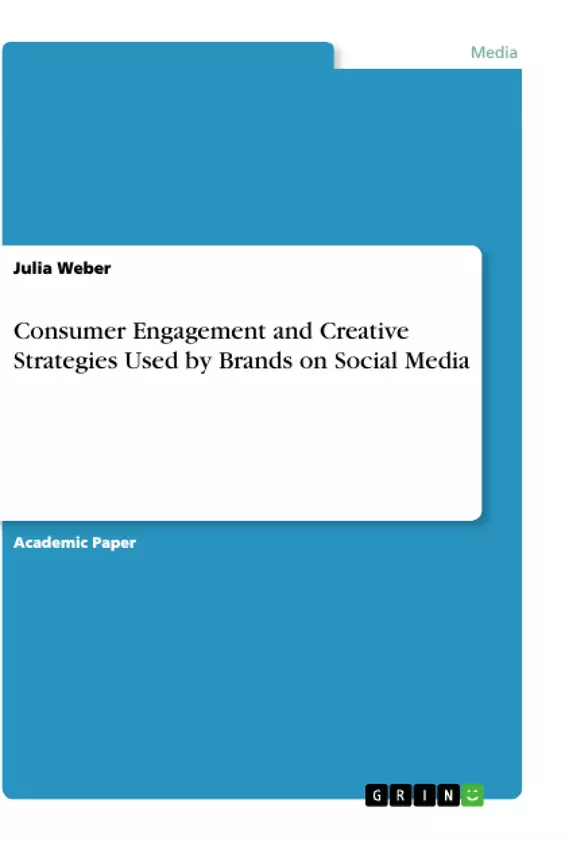This paper analyses the "Six-Segment Strategy Message Wheel by Ronald Taylor". In the course of the paper, three advertising campaigns are being analysed using Taylor's Six-Segment Strategies. The advertisements are "Volvo -Life Paint", "Homecoming - Edeka" and "Immortal Fans - Club do Recife".
In advertisement, many strategies are used to catch the potential consumers eye, draw his/hers attention to a product or service and to appeal to an unfulfilled need, the consumer might not even be aware of. Try to sell your product, spotlight its features and make the consumer want it. There are many psychoanalytical theories how humans function and how we, as consumers, react to
different incentives.
From Freud's psychoanalytic theory of personality which argues that human behavior "is the result of the interactions among three component party of the mind: the Id, Ego and Superego" to the Veblenian Social-Psychological Model which portrays man as "social animals".
Veblen is convinced that economic consumption is motivated by prestige-seeking and not as one would expect, satisfaction of needs. He assumes that "attitudes and behavior are influenced by several levels of society: culture, subculture, social classes, reference groups, and face-to-face groups".
The key of any advertisement is to create a message which engages the consumer.
Inhaltsverzeichnis (Table of Contents)
- 1.0 Introduction
- 1.1 Six-Segment Strategy Message Wheel by Ronald Taylor
- 2.0 Advertisement
- 2.1 EDEKA - Heimkommen
- 2.2 VOLVO - Life Paint
- 2.3 Immortal Fans
- 3.0 References
Zielsetzung und Themenschwerpunkte (Objectives and Key Themes)
This paper explores the use of social media channels and creative strategies by brands to engage consumers. It examines how these tactics relate to consumer behavior and loyalty. The paper aims to provide an in-depth understanding of the strategies employed by brands, utilizing a theoretical framework based on Ronald Taylor's Six-Segment Message Strategy Wheel. The analysis focuses on real-world case studies such as EDEKA, Volvo, and Immortal Fans to illustrate the application of these concepts in practice.
- Consumer Engagement
- Social Media Marketing Strategies
- Brand Positioning and Consumer Loyalty
- Psychoanalytical Theories of Consumer Behavior
- Ronald Taylor's Six-Segment Message Strategy Wheel
Zusammenfassung der Kapitel (Chapter Summaries)
The introduction provides a foundation for understanding consumer behavior in the context of advertising, highlighting the role of psychoanalytic theories and Veblenian Social-Psychological models. It introduces the concept of consumer engagement and its significance in brand loyalty. The chapter then delves into Ronald Taylor's Six-Segment Message Strategy Wheel, a model that aims to capture the diverse motivations behind consumer purchasing decisions. The model is divided into two categories: "Transmission View" and "Ritual View", each with three segments representing different levels of rational and emotional attachment to products.
Chapter 2 focuses on specific advertising campaigns that exemplify the application of the Six-Segment Message Strategy Wheel. The analysis explores the creative strategies used by EDEKA, Volvo, and Immortal Fans to engage consumers and drive brand loyalty. By examining these case studies, the paper aims to demonstrate how brands leverage social media and creative storytelling to connect with their target audiences.
Schlüsselwörter (Keywords)
The key themes and concepts explored in this paper include consumer behavior, social media marketing, brand positioning, consumer engagement, consumer loyalty, psychoanalytic theories, Veblenian Social-Psychological model, and Ronald Taylor's Six-Segment Message Strategy Wheel. The analysis further investigates specific advertising campaigns by EDEKA, Volvo, and Immortal Fans as examples of successful engagement strategies.
- Quote paper
- Julia Weber (Author), 2017, Consumer Engagement and Creative Strategies Used by Brands on Social Media, Munich, GRIN Verlag, https://www.grin.com/document/539869



